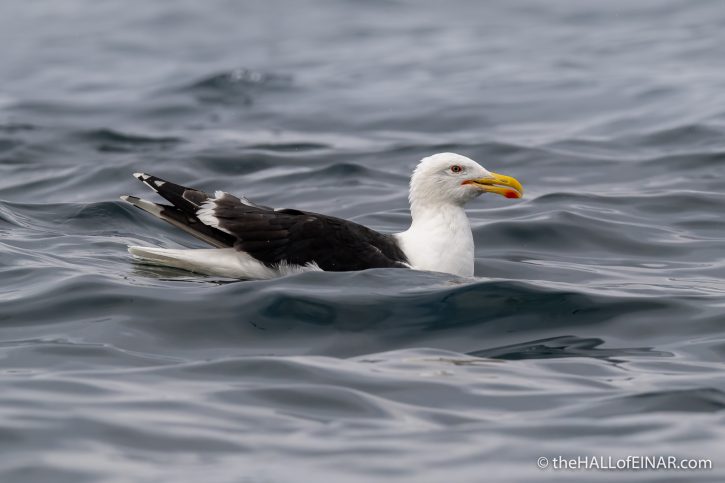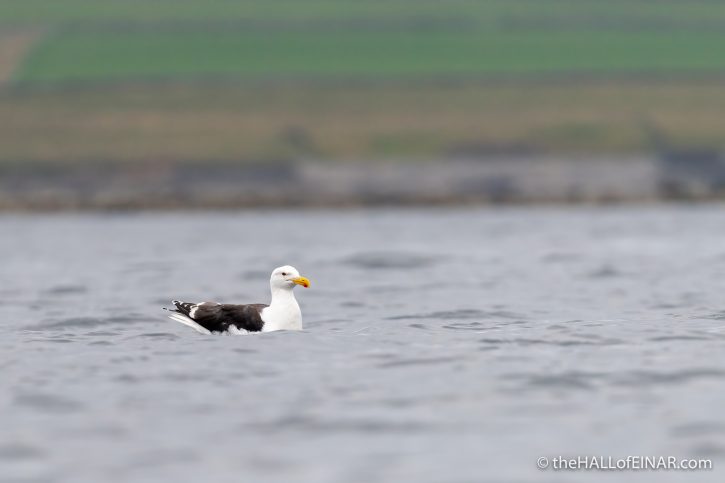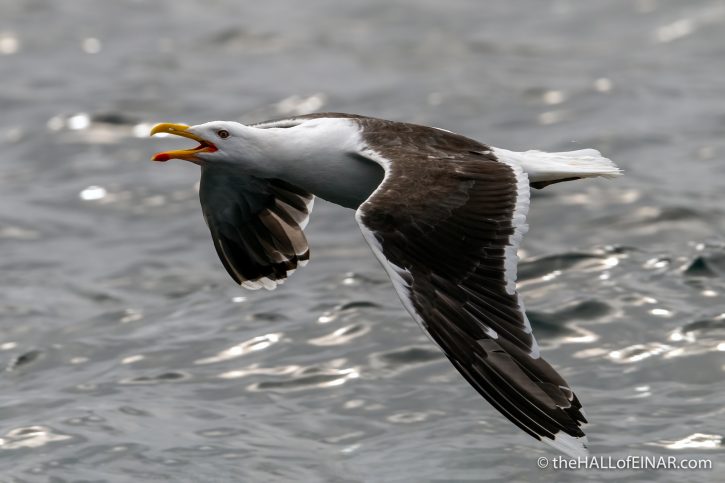“…it meddles not with lambs or poultry, but for carrion and garbage none is more so.”
We have the largest gull in the world in the waters around our coast.

And it is magnificent.

The Fauna Orcadensis by Reverend George Low from 1813 has an interesting entry on the Great Black-Backed Gull:
GENUS XXIX.—THE GULL-KIND.
Gen. Char. Bill strong, straight, but bending down at the point, on the under part of the lower mandible an angular prominency: nostrils oblong and narrow, placed in the middle of the bill; tongue a little cloven; body light; wings long; legs small, and naked above the knees; back toe small.
Species 1. – The Great Black and White Gull.
Orc. Blackbacked-Maw, Swartback.
This is the largest of the gull-kind which is found in these seas, or round the whole country. It continues here the whole year; builds on the insulated rocks round the shores, and sometimes on the shelves. It is very ravenous, as much so as an eagle, only it meddles not with lambs or poultry, but for carrion and garbage none is more so. It beats away the smaller gulls from any fish which may happen to be thrown ashore, and seizes the whole prey to itself; but if it misses of this, sits down contentedly to a piece of dead horse if it can get it.
In bulk it almost equals a goose; the length, from the point of the bill to the end of the tail, two feet three inches, but if measured to the claws it is two feet five; when the wings are extended it is five feet three inches from tip to tip. The beak of one I measured was something more than three inches long, very strong, and much hooked at the point; on the the lower mandible is a large angular knob, which is black towards the opening of the mouth, but reddish below, the colour of the rest of the bill was a pale yellow; the nostrils were long, and broadest toward the point of the bill; the head was large, and on the crown a few ash-coloured spots; the neck to the shoulders, the breast, and belly white; the back and wings black; the quill feathers were all tipt with white; the rump white, with twelve spotted feathers in the tail; the legs were bare above the knee for a small space, as in the others of the kind, of a pale flesh-colour inclining to white; the claws black.
I never saw its egg, but Mr Pennant tells us it is very blunt at each end, of a dusky-olive colour, quite black at the greater end, and the rest of it thinly marked with dusky spots. I know not if there is any variety with red feet which Linnæus describes his with; mine, too, had a few ash-coloured spots on the head which Mr Pennant’s has not, but this might have been owing to difference of sex or age, as there is no genus of birds perhaps which passes through more changes of colour than the gull-kind, which seldom arrive at their colour the first year:
I particularly like the phrase “sits down contentedly to a piece of dead horse if it can get it.” That must be tricky now there are so few horses and the law required their carcasses to be removed rather than made available to scavengers. We need to change that and have ‘sky-tables’ to allow a range of bird species to feed.
Hunter, pirate, scavenger, it is called the ‘king of the Atlantic waterfront’ by the Cornell Lab of Ornithology. That seems reasonable until you see how a Great Skua, or Bonxie, can bully them. Still, I wouldn’t pick an argument with one.

Would you?